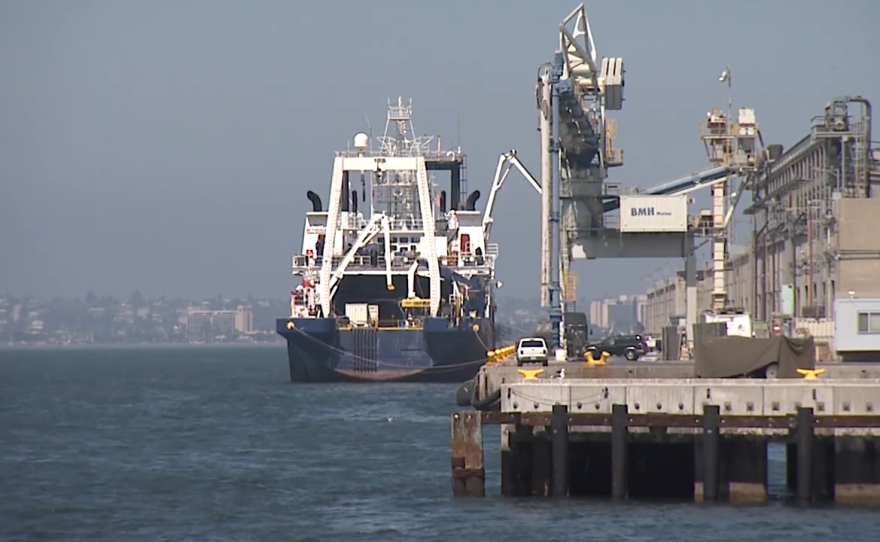The Port of San Diego announced Thursday it will move forward with a system intended to control and capture cargo vessel emissions, also known as a bonnet.
The Board of Port Commissioners approved an agreement with Clean Air Engineering-Maritime to design, build and operate a barge-based emissions control and capture system, also known as the Marine Exhaust Treatment System, which must be certified by the California Air Resources Board.
This system will be available for use by cargo vessels that aren't yet equipped to connect to shore power by placing a bonnet over the vessel's stack to capture and treat exhaust while the ship is at berth. CARB requires the exhaust treatment to be equivalent to electric power at berth.
Shore power allows vessels to plug into shore-based electricity so they don't have to run their diesel engines while at berth.
"The bonnet will give some of our cargo carriers a great option in reducing their air quality impacts while they work to transition their vessels to being shore power compatible," said Dan Malcolm, chairman of the port board.
"This is another example of how we can maintain and grow our maritime business — and protect jobs — while also improving air quality and quality of life for all who live, work, and play on and around San Diego Bay."
The bonnet system is intended to support the port's "Health Equity for All" vision — specifically, the goal to reduce emissions from ocean-going vessels. Additionally, CARB regulations require that auto carrier vessels reduce emissions while at berth at California seaports beginning in 2025 by utilizing either shore power or bonnet technology. The National City Marine Terminal primarily processes automobile imports.
"The Port of San Diego is aggressively pursuing every mitigation measure available to ensure the highest air quality of any port community," said Nick Tonsich, president of Clean Air Engineering-Maritime. "We are proud to work with the port and provide our years of experience in this public-private partnership."
According to port documents, the project's total cost is estimated at around $11.5 million, with the port directing $4.9 million in grant funds received from the California Transportation Commission. Clean Air Engineering-Maritime is covering the rest. The system is planned to be operational by Jan. 1, 2025.








